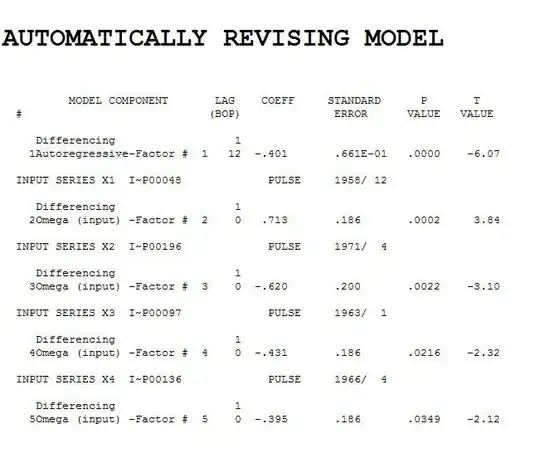[Aside: We're using a chi-squared distribution to obtain the confidence interval because this interval is obtained assuming we're sampling from a normal distribution.]
While the interval for $\sigma$ not including the observed sample value of $s$ might at first glance seem surprising, it occurs for the simple reason that the distribution of a chi-squared random variable doesn't have its median at its degrees of freedom (that's where its expected value is, but the distribution is skewed -- the median is below the d.f.). For example, with $\nu=3$, the expected value ($3$) is nearly at the 61st percentile.
Now for $\alpha$ near 1, $\alpha/2$ and $1-\alpha/2$ will both be very close to $\frac12$ and so the corresponding percentage points of a chi-square will be very close to the median. Consequently, if $\alpha$ is large enough (i.e. if the coverage of the interval, $1-\alpha$, is small enough), both percentage points can turn out to be below the mean, as in this example:

In the particular example above, the $0.475$ quantile and the $0.525$ quantile each cut off half of the tail area that totals $0.95$, leaving $0.05$ between those endpoints. We see that both quantiles are well below $\nu=3$ (which is way up past the $0.60$ quantile -- even a 20% CI would have this issue).
As a result of that, the chi-square percentage points divided by the degrees of freedom can both be below 1. If that happens, this makes both ends of the interval for $\sigma$ larger than $s$ (the sample standard deviation).
In more detail --
The quantiles $\chi^2_{\alpha/2}/\nu$ and $\chi^2_{1-\alpha/2}/\nu$ are both below $1$. The interval for $\sigma^2$ is $(r_1 s^2,r_2 s^2)$ where $r_1=\frac{\nu}{\chi^2_{1-\alpha/2}}$ and $r_2=\frac{\nu}{\chi^2_{\alpha/2}}$ are the reciprocals of those quantities that are below $1$ (making the $r_i>1$).
This means that the interval for $\sigma^2$ lays entirely above $s^2$ ... and the interval for $\sigma$ is obtained by taking square roots of those limits, so the interval for $\sigma$ also doesn't include $s$.
Considered more directly the interval for $\sigma$ is $(\sqrt{r_1} s,\sqrt{r_2} s)$ -- and both $\sqrt{r_i}$ values are in turn greater than $1$, so the interval for $\sigma$ also doesn't include $s$.
So while the expected value of $s^2$ is $\sigma^2$, $s^2$ is typically smaller than $\sigma^2$ (because the distribution of $s^2$ is skewed right), correspondingly you'd expect a very narrow interval for $\sigma^2$ to sit above the observed $s^2$. This carries through to the interval for $\sigma$.
We should tend to see similar effects occur with other intervals that result from skewed distributions.
